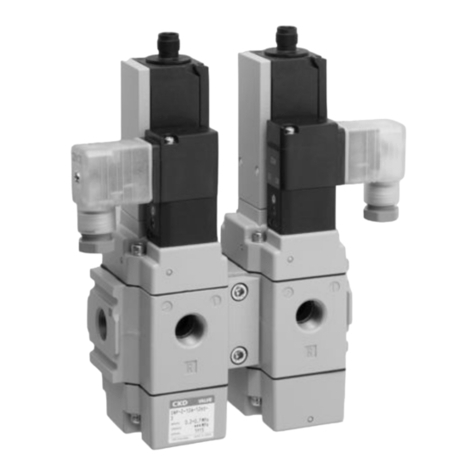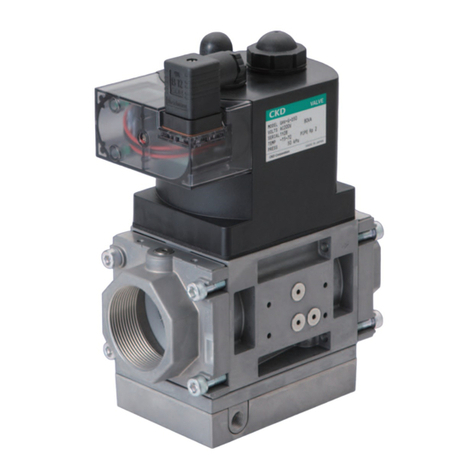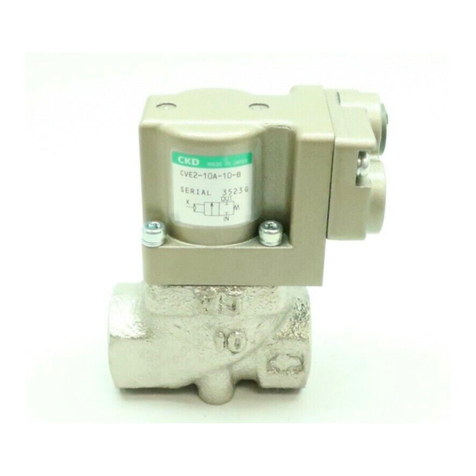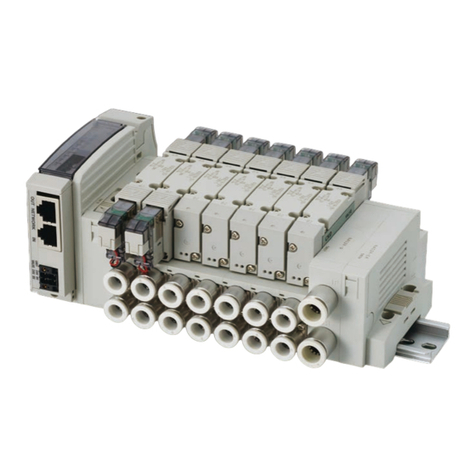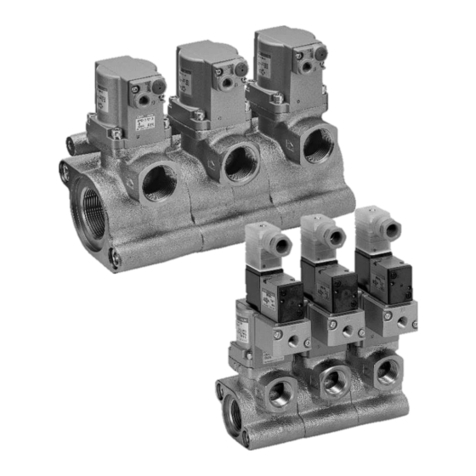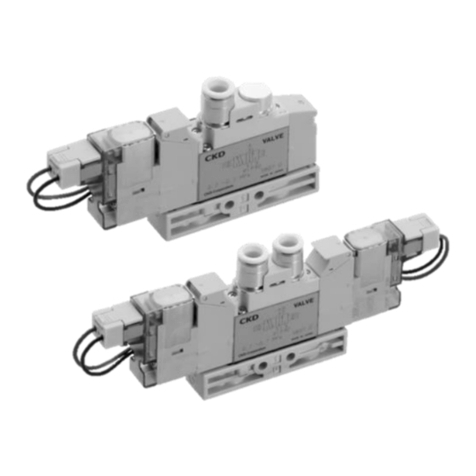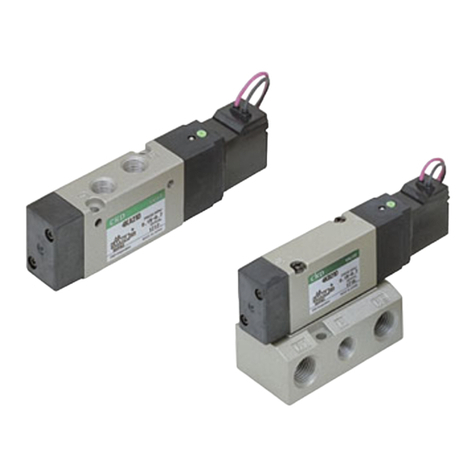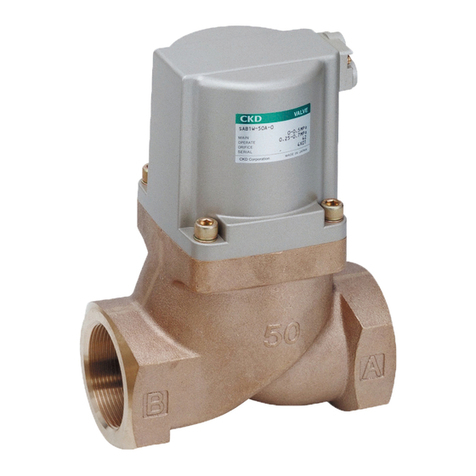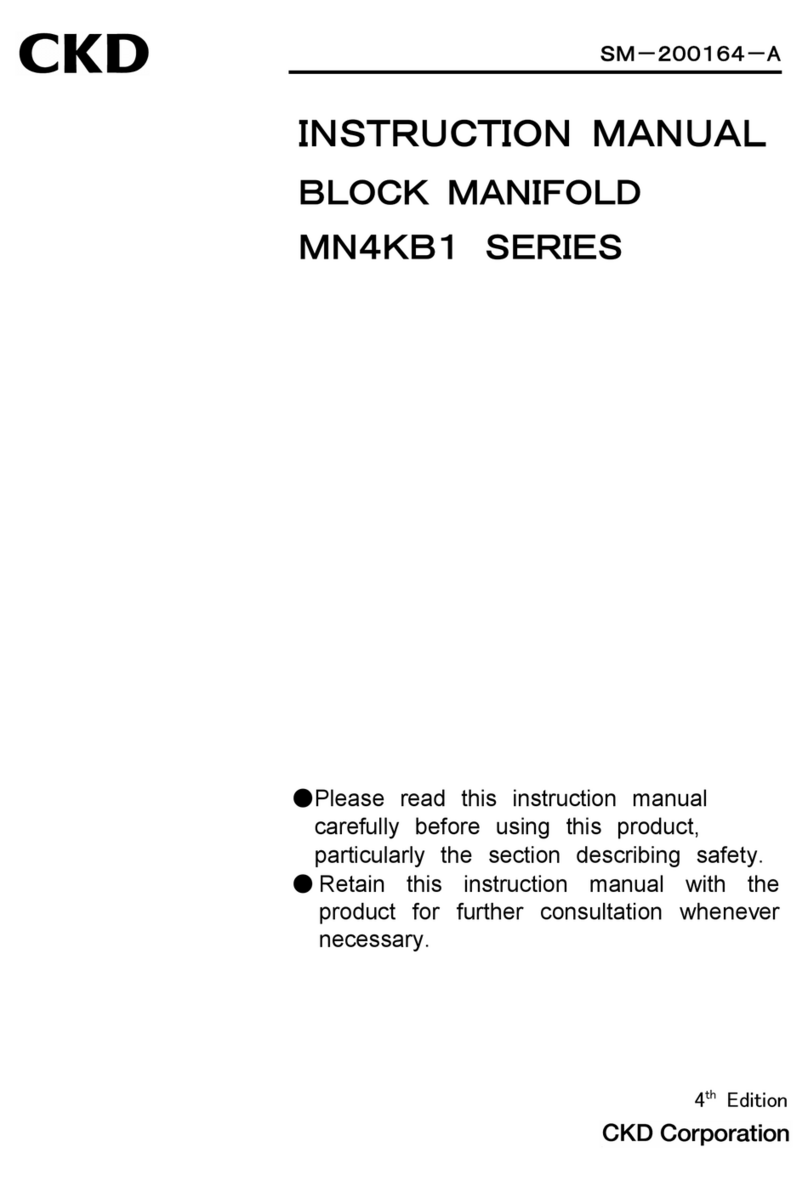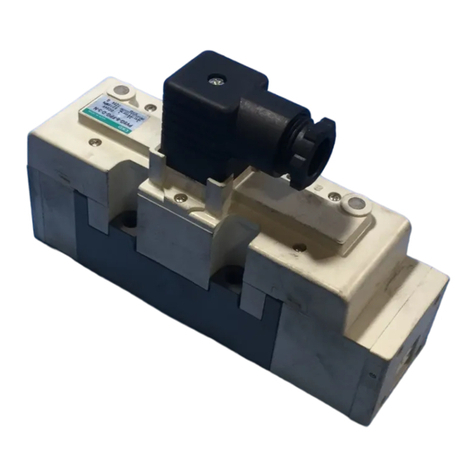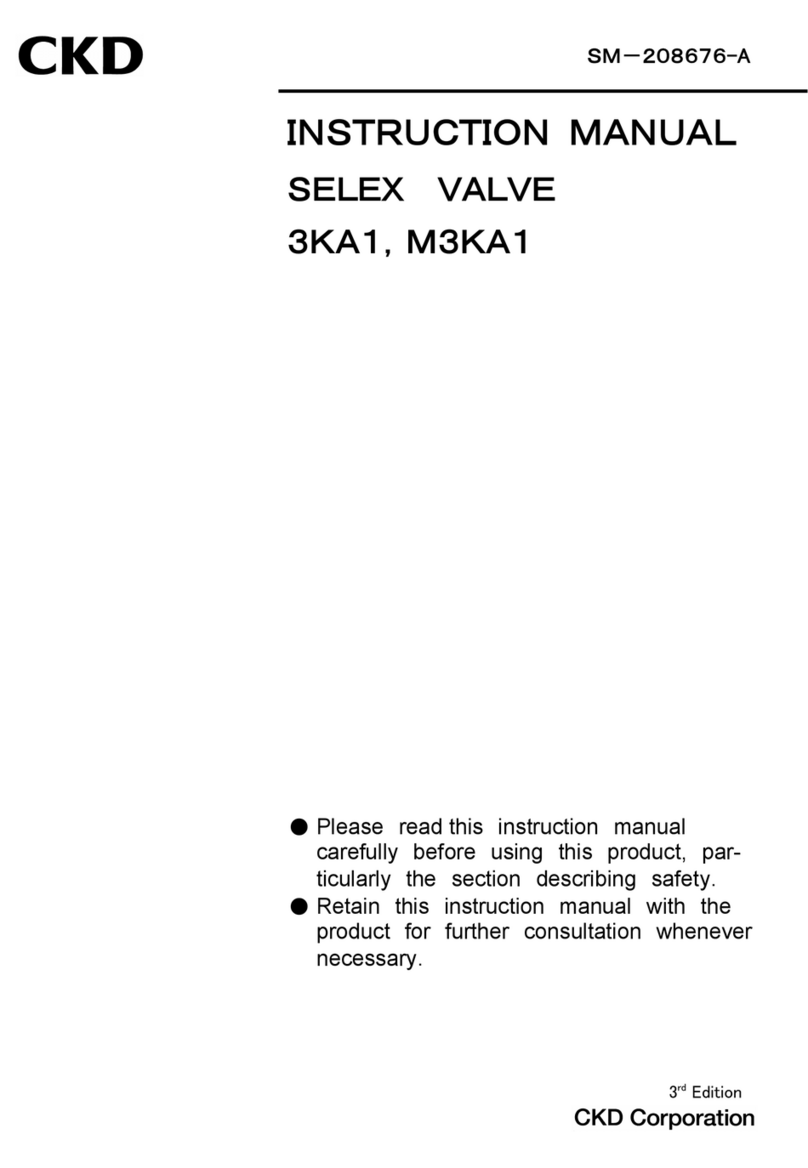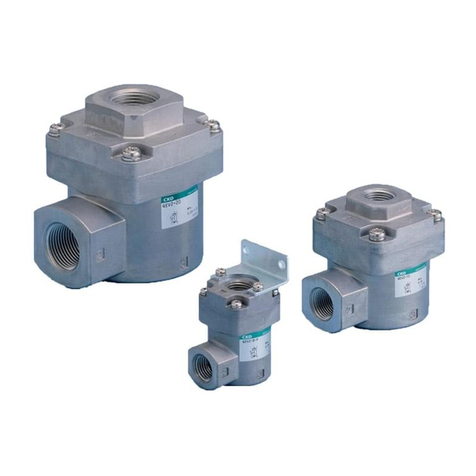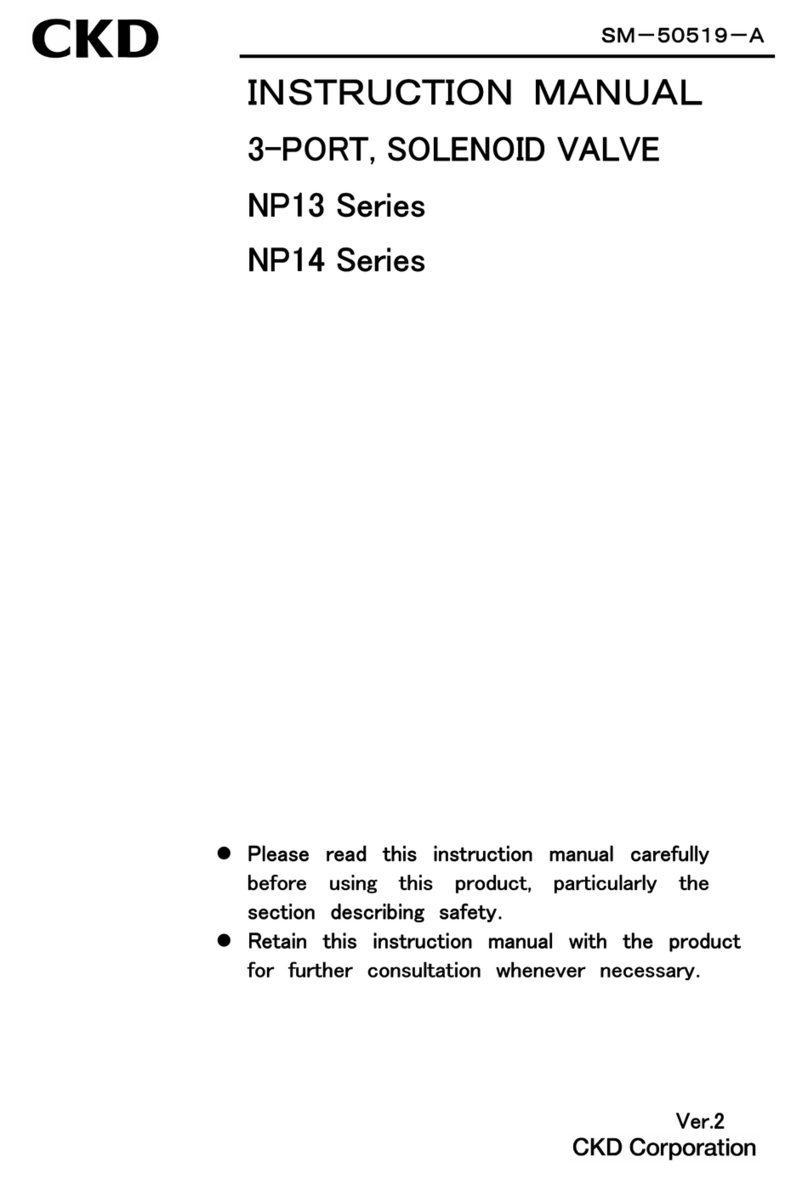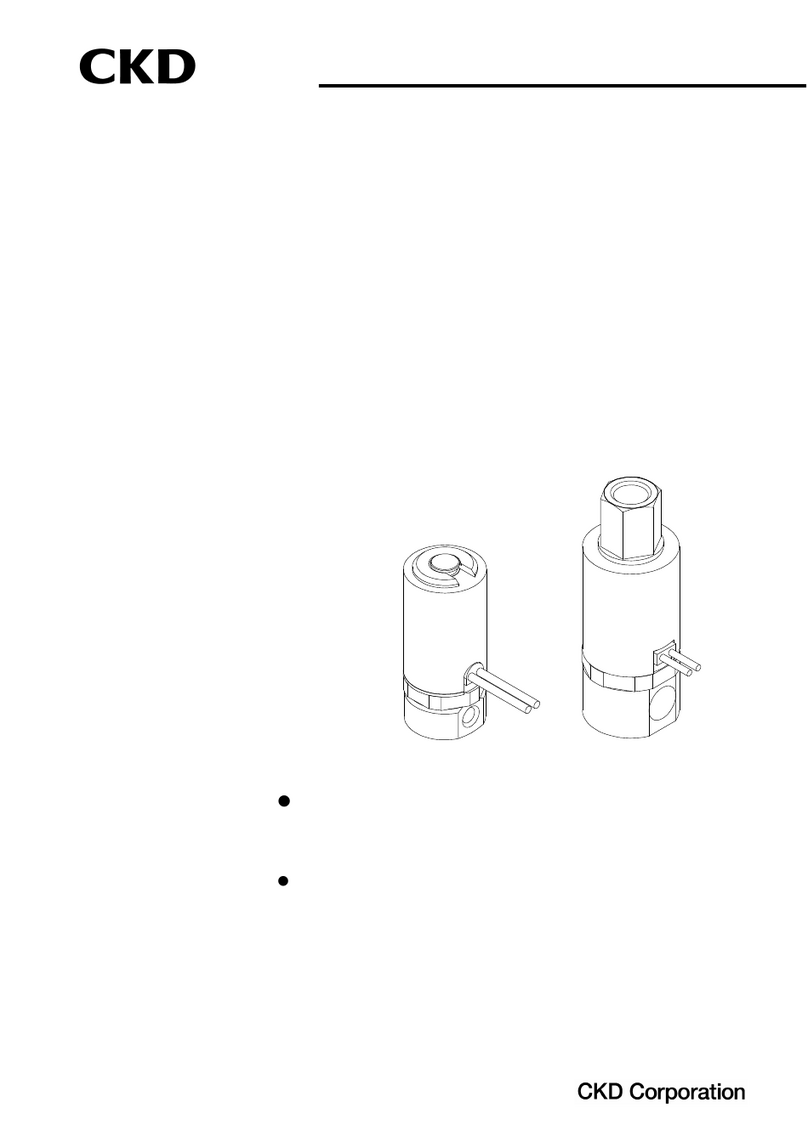
[SM-206792-A/3] ―1
SAFETYPRECAUTIONS
WhendesigningandmanufacturingadeviceusingCKDproducts,themanufacturerisobli-
gatedtomanufactureasafeproductbyconfirmingsafetyofthesystemcomprisingthe
followingitems:
・Devicemechanism
・Pneumaticorwatercontrolcircuit
・Electriccontrolthatcontrolstheabove
Itisimportanttoselect,use,handle,andmaintaintheproductappropriatelytoensurethat
theCKDproductisusedsafely.
Observewarningsandprecautionstoensuredevicesafety.
Checkthatdevicesafetyisensured,andmanufactureasafedevice.
1.Thisproductisdesignedandmanufacturedasageneralindustrialmachinepart.Itmust
behandledbysomeonehavingsufficientknowledgeandexperience.
2.Usethisproductwithinitsspecifications.
This product cannot be used beyond its specifications. Additionally, the product must not be
modifiedormachined.
Thisproductisintendedforuseingeneralindustrialdevicesandparts.Usebeyondsuchconditions
is not considered. Consult with CKD for details when using the product beyond the unique
specificationrange,outdoors,orinthefollowingconditionsorenvironments.Inanycase,measures
forsafetyshallbeprovidedwhenthevavlemalfunctions.
①Useforspecialapplicationsrequiringsafetyincludingnuclearenergy,railroad,aviation,ship,vehicle,
medical equipment, equipment or applications coming into contact with beverage or food,
amusementequipment,emergencyshutoffcircuits,pressmachine,brakecircuits,orforsafeguard.
②Useforapplicationswherelifeorassetscouldbeadverselyaffected,andspecialsafetymeasures
arerequired.
3.Observecorporatestandardsandregulations,etc.,relatedtothesafetyofdevicedesign
andcontrol,etc.
ISO4414,JISB8370(pneumaticsystemrules)
JFPS2008(principlesforpneumaticcylinderselectionanduse)
Including High Pressure Gas Maintenance Law, Occupational Safety and Sanitation Laws, other
safetyrules,standardsandregulations,etc.
4.Donothandle,pipe,orremovedevicesbeforeconfirmingsafety.
①Inspectandservicethemachineanddevicesafterconfirmingsafetyoftheentiresystemrelatedto
thisproduct.
②Notethattheremaybehotorchargedsectionsevenafteroperationisstopped.
③Wheninspectingorservicingthedevice,turnofftheenergysource(airsupplyorwatersupply),and
turn off power to the facility. Release any compressed air from the system, and pay enough
attentiontopossiblewaterleakageandleakageofelectricity.
④When starting or restarting a machine or device that incorporates pneumatic components, make
surethatsystemsafety,suchaspop-outpreventionmeasures,issecured.
